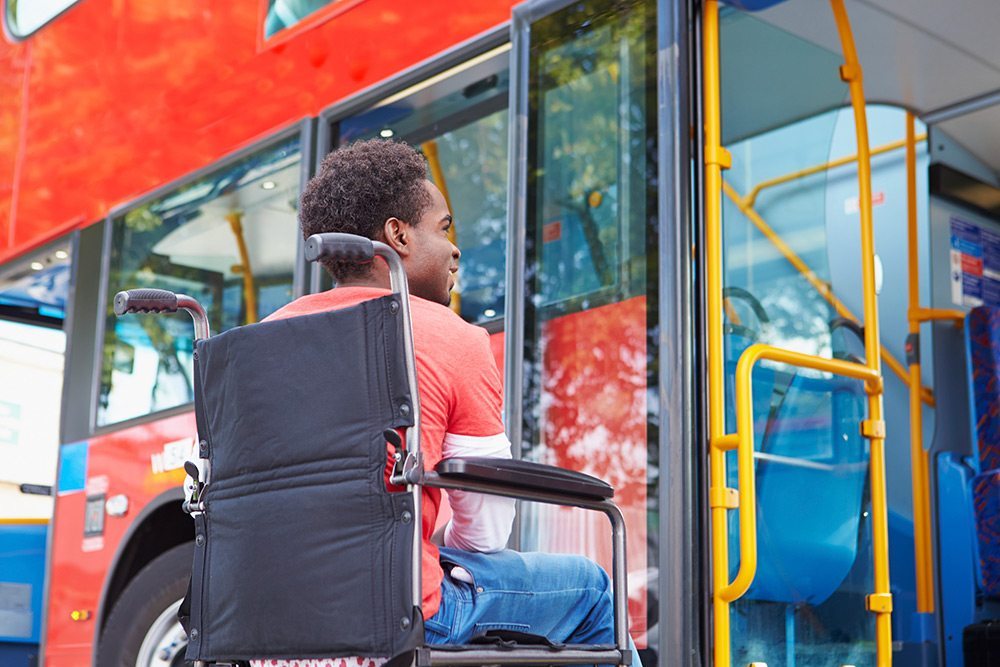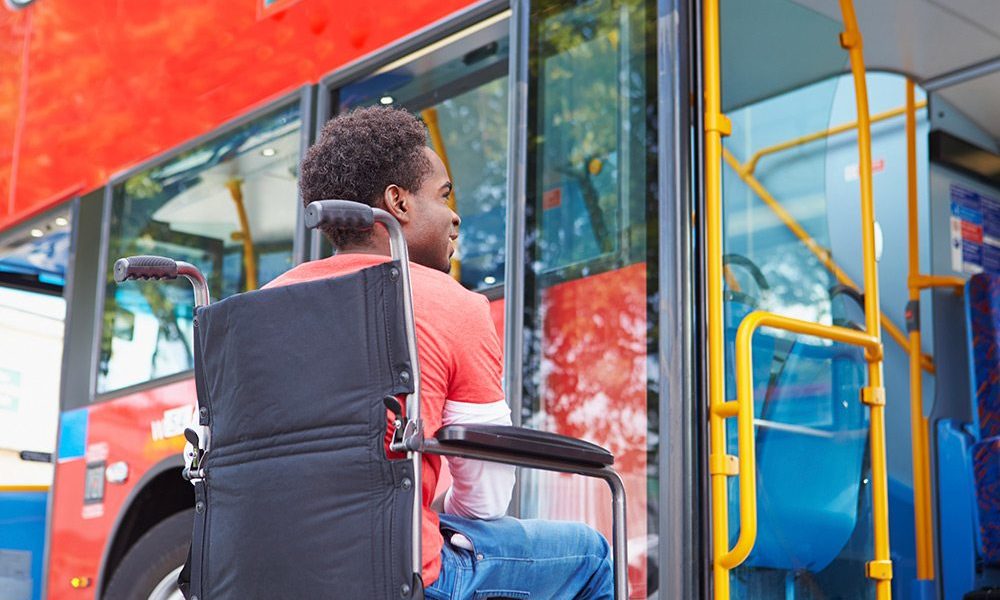Finding accessible public transportation for people with disabilities can be challenging, but suitable transportation options are on the rise. Accessible public transportation options for people with HIE, cerebral palsy, and other disabilities include:
- Fixed-route systems (such as a bus that follows the same schedule every day)
- Commuter rails (for example, trains that travel from a city center to a suburb)
- Paratransit systems (‘Dial-a-Ride’)

Accessibility of General Public Transportation
Under the Americans with Disabilities Act (ADA), modes of public transportation, as well as transportation facilities such as train stations and airports, must meet certain accessibility standards and be able to accommodate wheelchair users and service animals. ADA-compliant transportation operators must train personnel to use accessibility equipment (such as wheelchair lifts) and to assist with boarding and disembarking (for example, pushing a manual wheelchair up a steep ramp). For more information on equal access to transportation, please visit the U.S. Department of Transportation’s website here. For more specific information about accessible transportation in your area, refer to your state or local Department of Transportation (DoT) or Regional Transit Authority.
Paratransit
Although federal law guarantees equal access to transportation, the unfortunate reality is that navigating public transportation in a wheelchair or with physical/mental impairments can be time-consuming and frustrating. Many people rely in part on paratransit, or transportation organizations that specialize in serving people with disabilities. Some paratransit operators only offer specific services, such as transportation to medical appointments, while others offer to take clients from any origin to any destination within a given area. Many will provide door-to-door services; that is, they can assist clients with getting from a building to the vehicle or vice versa. Paratransit may be provided by public transit agencies, for-profit enterprises, or non-profit organizations.
Related Reading
Airline Crackdowns on Emotional Support Animals Incite Controversy
Travel Information: Finding Accessible Vacation Destinations and Activities

